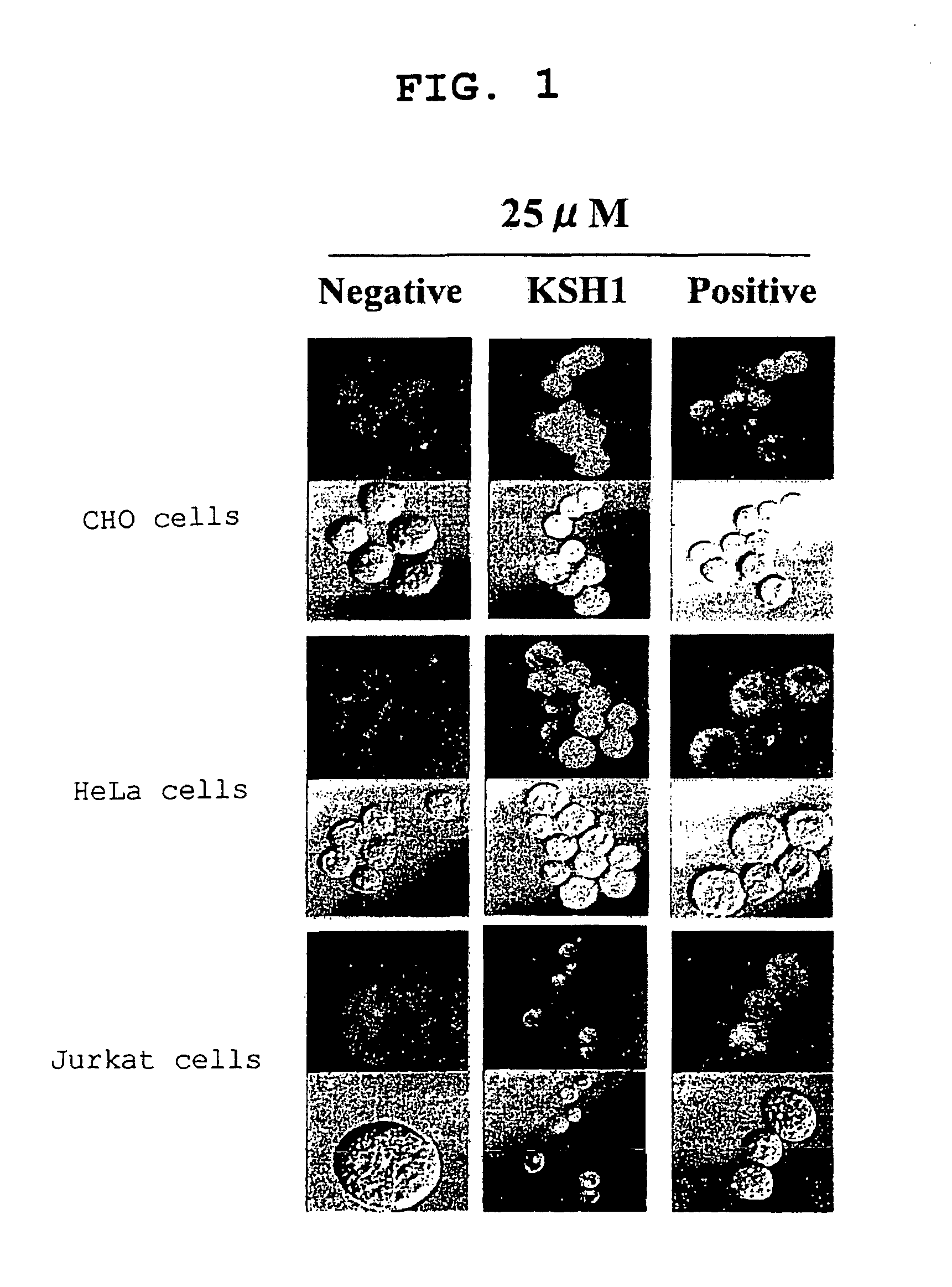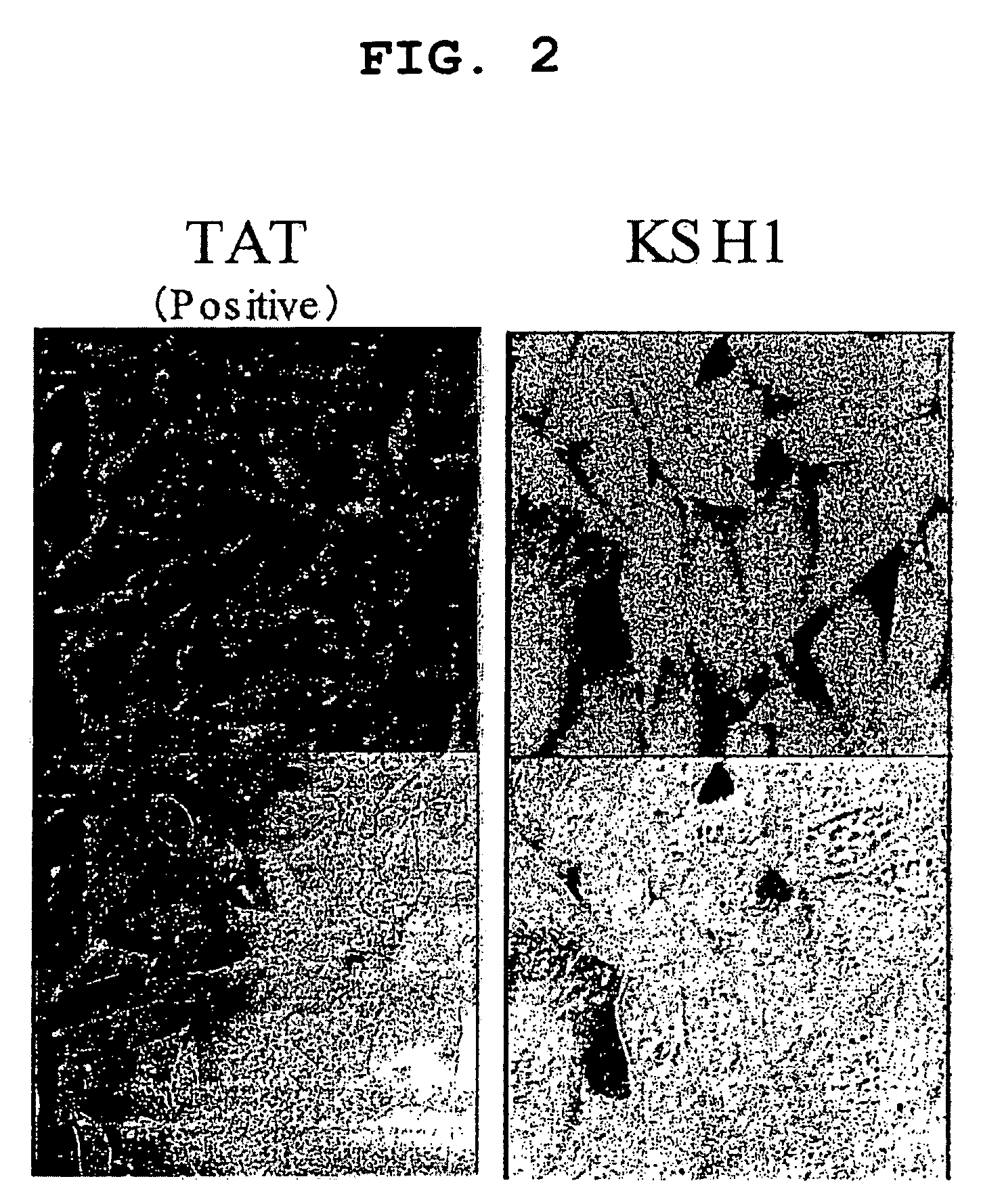Cell penetrating peptide
a cell-penetration and peptide technology, applied in the field of new cell-penetration peptides, can solve the problem of low translocation efficiency
- Summary
- Abstract
- Description
- Claims
- Application Information
AI Technical Summary
Benefits of technology
Problems solved by technology
Method used
Image
Examples
example 1
Cell Membrane Passage Test Using Synthetic Peptides
example 1-1
Section of Cell Penetrating Peptide Sequences
[0087]Intracellularly transferable peptide sequences were concentrated according to a method described in JP-A-2005-13073, using a library of Jurkat cells (ATCC NO. TIB-152). Specifically, after a library of in vitro viruses presenting random peptides of 15 amino acids (hereinafter abbreviated IVVs) (library scale 1012) was prepared, the library was added to HeLa cells (ATCC NO. CCL2) or Jurkat cells. After cDNAs of IVVs that had translocated into the cells were recovered by PCR, IVVs were again prepared and added to the cells. By repeating the addition-recovery operation, “the peptides that translocation into cells” being present in the library were concentrated. To identify the libraries wherein the intracellularly transferable peptides had been concentrated in the various concentration operation stages, 11 kinds of amino acid sequences were arbitrary selected from the libraries after the 5th to 8th concentration operations, and the pep...
example 1-2
Confocal Microscopic Analysis
[0088]With the PTD derived from HIV TAT protein shown by SEQ ID NO:50 in the sequence listing as the positive control (in FIG. 1 to FIG. 3, denoted by “Positive” or “TAT”), and a mutant of the TAT-derived PTD shown by SEQ ID NO:51 in the sequence listing, reported by Ulo Langel et al. (Cell-Penetrating Peptides: Processes and Applications, Series: Pharmacology and Toxicology: Basic and Clinical Aspects Volume: 3, 2002), as the negative control (in FIG. 1, denoted by “Negative”), the peptides of the 11 sequences selected in Example 1-1 were evaluated.
[0089]The peptides of the 11 sequences selected in Example 1-1 were synthesized by the solid phase method, and fluorescently labeled by coupling 5,6-Carboxyfluorescein to the N-terminus of each peptide. Furthermore, the peptides were purified by HPLC to obtain a purity of 70% or more. Subsequently, each fluorescently labeled peptide was dissolved in 10% Dimethyl Sulfoxide (DMSO) to obtain 1 mM (hereinafter re...
PUM
| Property | Measurement | Unit |
|---|---|---|
| temperature | aaaaa | aaaaa |
| temperature | aaaaa | aaaaa |
| temperature | aaaaa | aaaaa |
Abstract
Description
Claims
Application Information
 Login to View More
Login to View More - R&D
- Intellectual Property
- Life Sciences
- Materials
- Tech Scout
- Unparalleled Data Quality
- Higher Quality Content
- 60% Fewer Hallucinations
Browse by: Latest US Patents, China's latest patents, Technical Efficacy Thesaurus, Application Domain, Technology Topic, Popular Technical Reports.
© 2025 PatSnap. All rights reserved.Legal|Privacy policy|Modern Slavery Act Transparency Statement|Sitemap|About US| Contact US: help@patsnap.com



